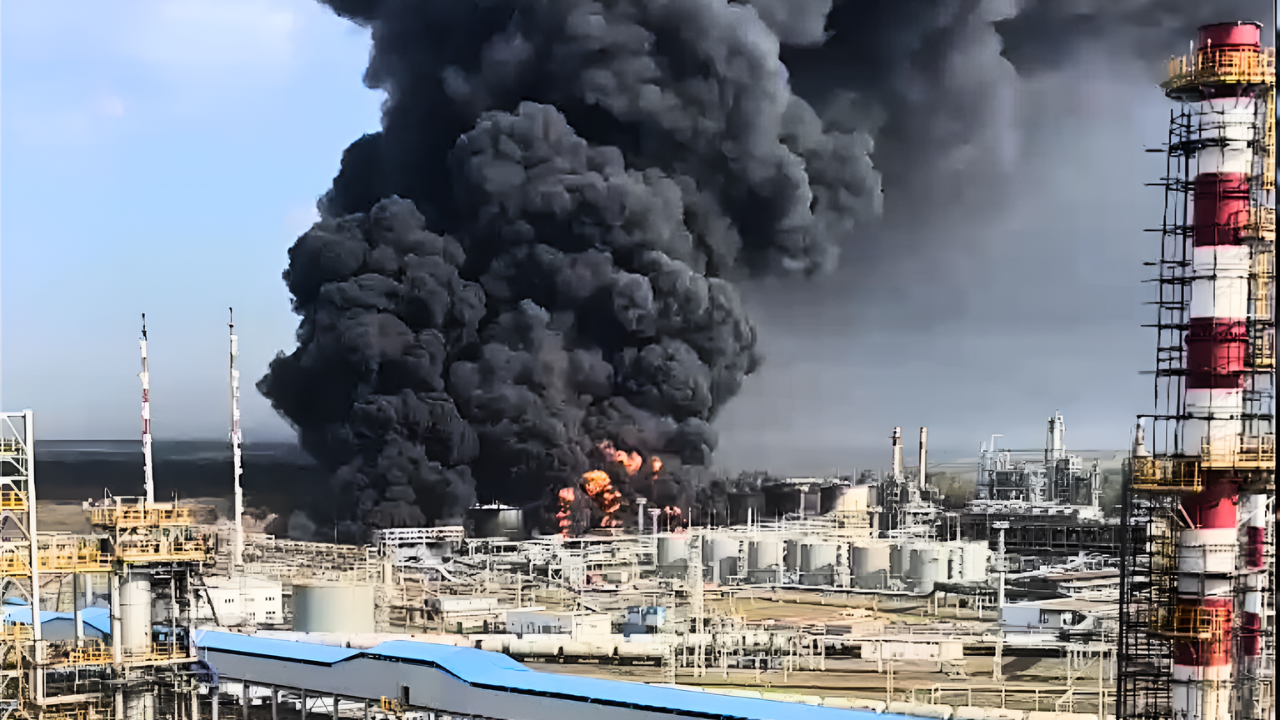
Before dawn on October 18, 2025, Ukraine launched one of its longest-range drone strikes yet—igniting a fire at Russia’s Orenburg gas processing plant, the largest of its kind worldwide. Locals described the horizon glowing orange as flames engulfed the site.
Emergency crews had contained the blaze by sunrise, but operations were halted. The damage was severe enough to silence one of Gazprom’s crown jewels.
Governor Confirms “Significant Infrastructure Damage”

Orenburg governor Yevgeny Solntsev told Russia’s TASS agency the blaze began in one of the plant’s main workshops after a drone strike. “It’s an emergency situation,” he said, adding that while there were no casualties, “significant infrastructure damage” was confirmed.
Firefighters worked through the night as smoke drifted for miles, an image that quickly spread across Russian social media.
Ukraine Takes Responsibility for the Attack

Ukraine’s General Staff claimed responsibility hours later, saying it targeted the Orenburg facility and the Novokuibyshevsk oil refinery in Samara. Both are key to Russia’s energy exports.
“Fuel keeps the war alive,” a Ukrainian military source told Reuters. “Cut the fuel, and you weaken the war machine.” Kyiv framed the operation as part of a campaign to cripple Moscow’s logistics.
A Cross-Border Energy Hub Brought to a Halt
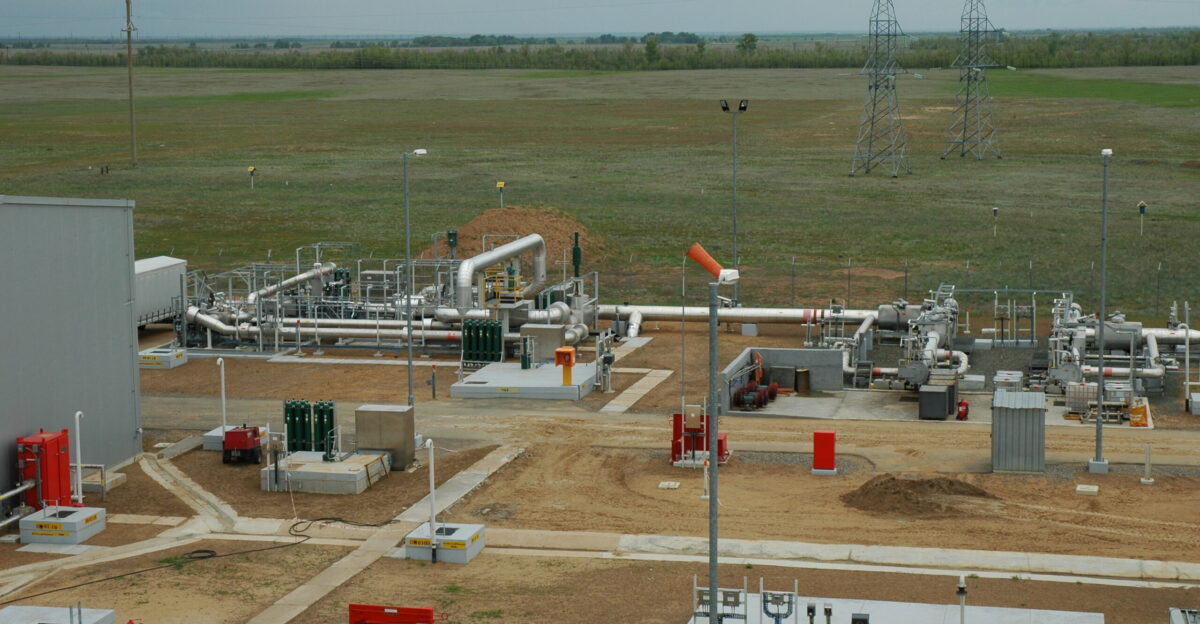
Gazprom’s Orenburg complex processes gas from Russian and Kazakh fields, including Kazakhstan’s Karachaganak deposit—one of the world’s richest. After the strike, Kazakhstan’s Energy Ministry confirmed production cuts of up to 30% due to the loss of processing access.
What began as a single strike quickly became a regional shockwave rippling through Eurasia’s shared energy grid.
Damage Estimated at $18 Billion and Rising

Analysts estimate damages exceeding $18 billion, combining halted exports, repair costs, and production losses. “You can’t easily replace what Orenburg does,” energy economist Tatiana Mitrova told the Financial Times.
As winter approaches, experts warn that the outage could pressure global gas markets. “This was a hit not just on Russia’s economy,” Mitrova said, “but on energy stability itself.”
Russia Says 45 Drones Shot Down—But One Got Through
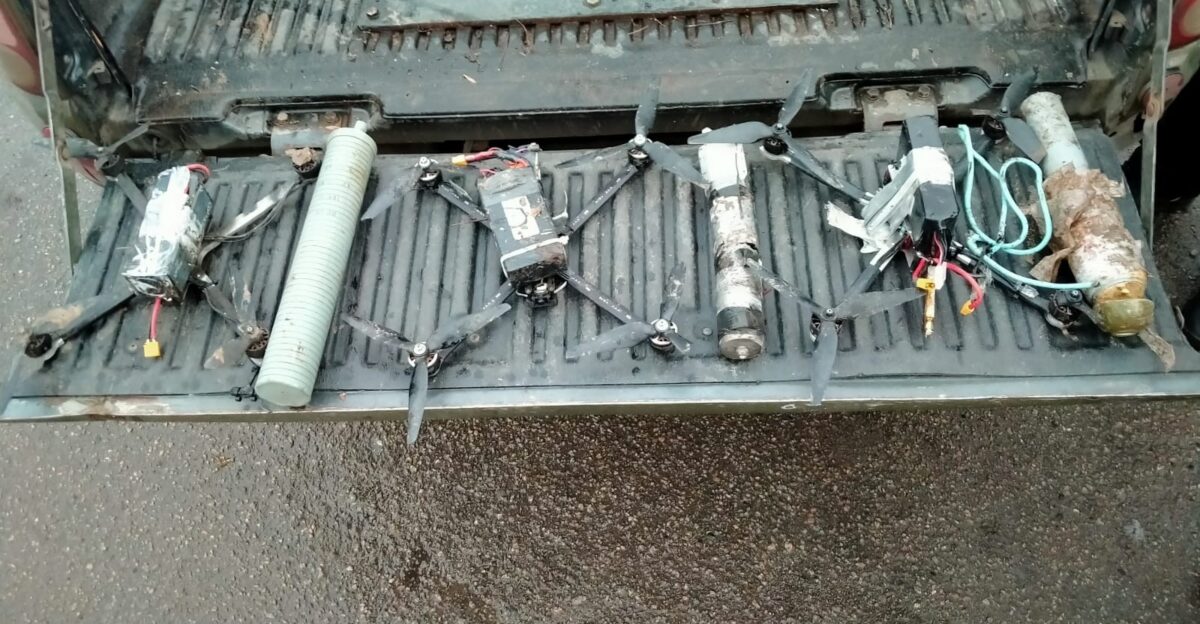
The Russian Defense Ministry reported intercepting 45 Ukrainian drones overnight. Yet one reached Orenburg—1,500 kilometers from the front lines. That alone was remarkable. Analysts told BBC News the strike demonstrated Ukraine’s evolving long-range drone capabilities.
“They’ve crossed a new threshold,” one defense expert said. “This isn’t symbolic anymore—it’s strategic.”
Kazakhstan Temporarily Halts Gas Exports to Russia
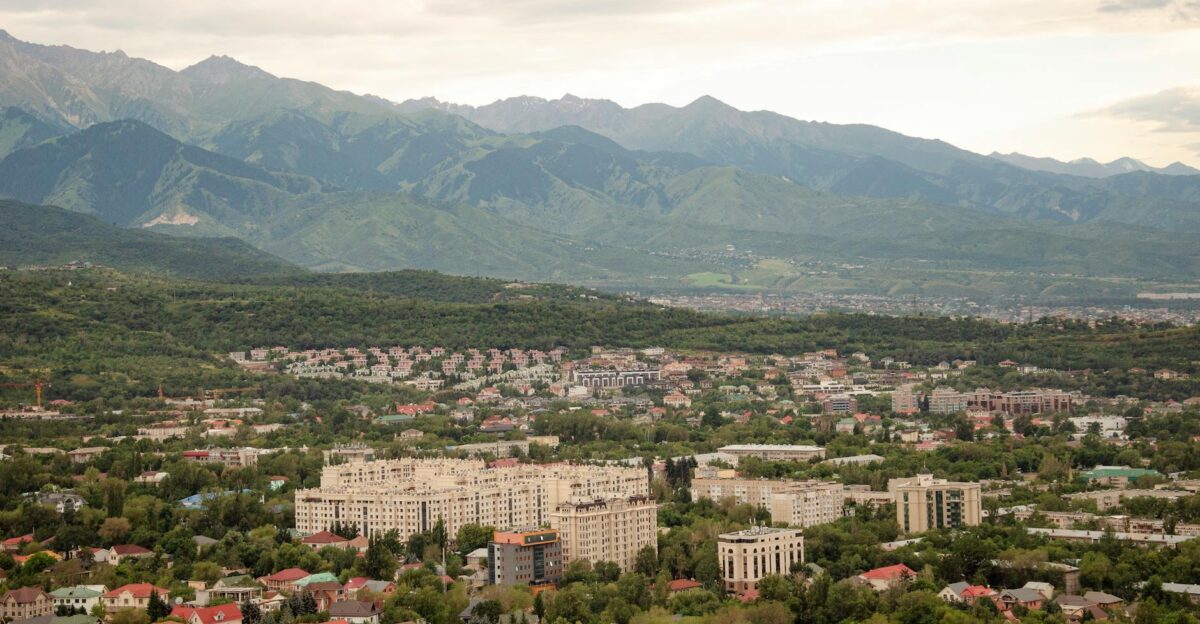
Across the border, Kazakhstan paused gas exports to Russia for safety checks. Officials called it a precaution, but the disruption exposed the fragility of the region’s shared infrastructure.
Videos on Telegram showed thick black smoke billowing over the steppe. “It was visible for miles,” one resident said. The fire, though contained, had already spread through global energy headlines.
Ukraine Expands Long-Range Strikes Inside Russia

Since August, Ukraine has intensified drone operations targeting Russia’s refineries and gas plants. Independent monitors with the Conflict Intelligence Team report more than 20 energy facilities hit.
Defense analyst Michael Kofman told NPR the campaign “aims to drain Moscow’s war funding while avoiding ground escalation.” Orenburg’s strike marks Ukraine’s deepest confirmed hit yet inside Russian territory.
“Russia’s Achilles’ Heel Lies in Its Fuel,” Kyiv Says

A senior Ukrainian official told Politico last month that “fuel is Russia’s real Achilles’ heel.” Orenburg proved the point. The strike stretched beyond 1,000 kilometers, demonstrating both reach and resolve.
For Kyiv, the message was as much psychological as strategic: nowhere in Russia’s vast network is truly out of range anymore.
Reports Suggest U.S. Intelligence Helped Identify Targets

The Financial Times reported that U.S. intelligence has quietly shared satellite data and target assessments with Ukraine since mid-2025. American officials, speaking anonymously, said the goal was to “pressure Moscow toward meaningful peace talks.”
Washington hasn’t confirmed those details, but Kyiv’s precision suggests a growing sophistication backed by real-time intelligence support.
Timing of Strike Aligns with New U.S. Diplomacy Push

The attack came as U.S. President Donald Trump told NBC News that Ukraine “may have to give up land for peace.” His comments drew criticism in Kyiv but reflected renewed diplomatic chatter.
Hours later, the strike on Orenburg highlighted Ukraine’s determination to fight on its own terms, not on the world’s timeline.
Zelenskyy Calls for Expanded Drone and Air Defense Cooperation
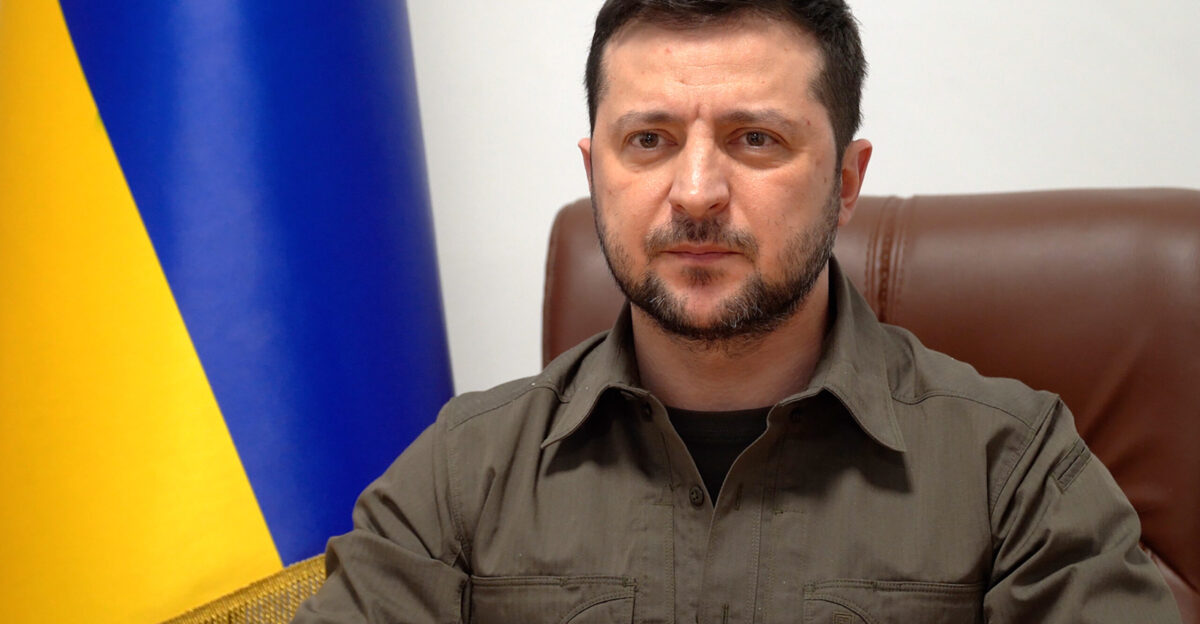
President Volodymyr Zelenskyy used his recent visit to Washington to call for deeper defense collaboration, urging joint drone production and air-defense expansion. “Russia strikes our energy every day,” he said.
“We must strike back smarter.” The Orenburg operation illustrated what “smarter” now means—long-distance, precision warfare built on innovation rather than scale.
Echoes of Saudi Arabia’s 2019 Energy Attack
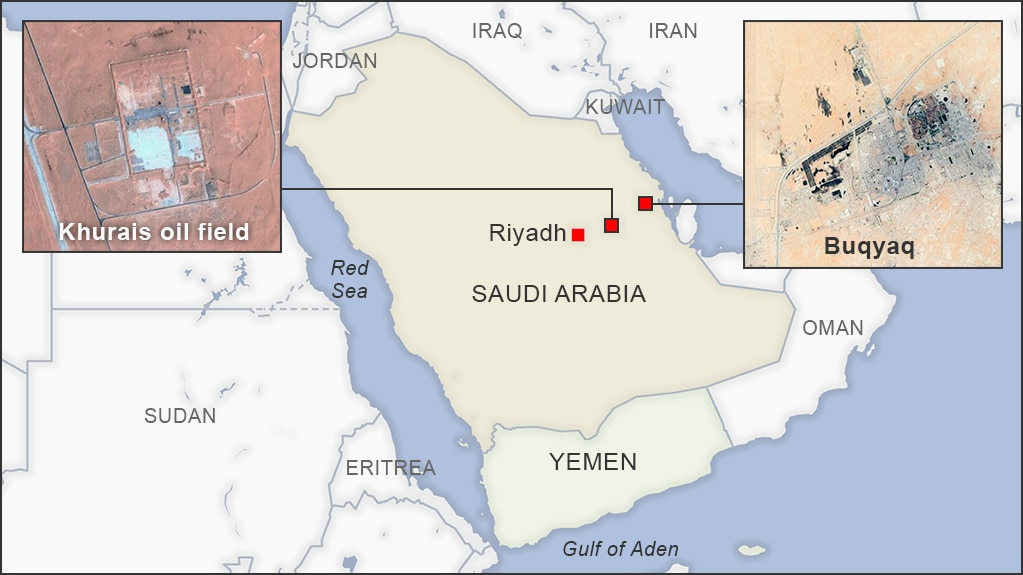
Experts quickly drew comparisons between the Orenburg fire and the 2019 drone strike on Saudi Arabia’s Abqaiq–Khurais facility, which cut global oil output by 5%. “It’s the same vulnerability,” said Helima Croft on CNBC. “A few drones can cripple billion-dollar systems in minutes.”
Orenburg reminded the world that energy power no longer guarantees protection.
Moscow Downplays Damage as Analysts Disagree

Gazprom said only “limited infrastructure” was affected and that repairs were “already underway.” Yet satellite imagery reviewed by Reuters showed burned pipelines and heavy damage to key processing units.
“They’re minimizing it for stability,” one independent analyst said. “But this isn’t a quick fix—it’s a deep wound.” The company has not offered a restoration timeline.
Kazakhstan Faces Economic Strain Amid Output Cuts
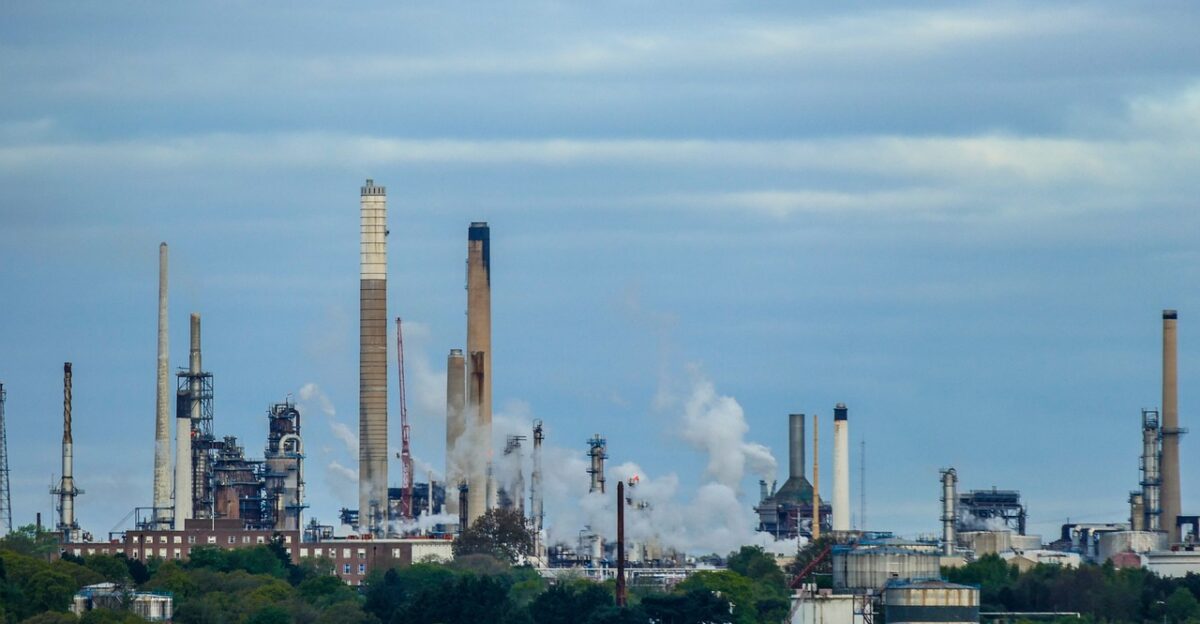
Kazakhstan’s Energy Ministry confirmed emergency output reductions at the Karachaganak field, calling the shutdown temporary. Economists in Almaty estimate losses in the millions per day.
“Our infrastructure depends on Orenburg’s capacity,” one energy consultant told Bloomberg. “When Russia’s system breaks, so does ours.” The strike has tested Kazakhstan’s fragile balance between Moscow and Kyiv.
Europe’s Gas Market Holds, But Risks Linger

For now, Europe’s gas markets remain steady, buffered by high reserves and diversified suppliers. However, analysts warn that sustained strikes on Russian facilities could tighten global supply.
“If another hit like Orenburg happens, expect prices to react fast,” said strategist Henning Gloystein to Reuters. Europe, for now, watches the flames from afar, but uneasily.
Drones Redefine the Cost of Modern Warfare

Cheap drones, once tools of surveillance, now rival missiles in impact. Many of Ukraine’s long-range systems are domestically modified, blending off-the-shelf parts with advanced navigation. “For the cost of one Russian missile, Ukraine can deploy dozens,” The Guardian reported.
The Orenburg fire highlights a new truth: technology—not tonnage—now defines power.
Moscow Expected to Retaliate with Renewed Force
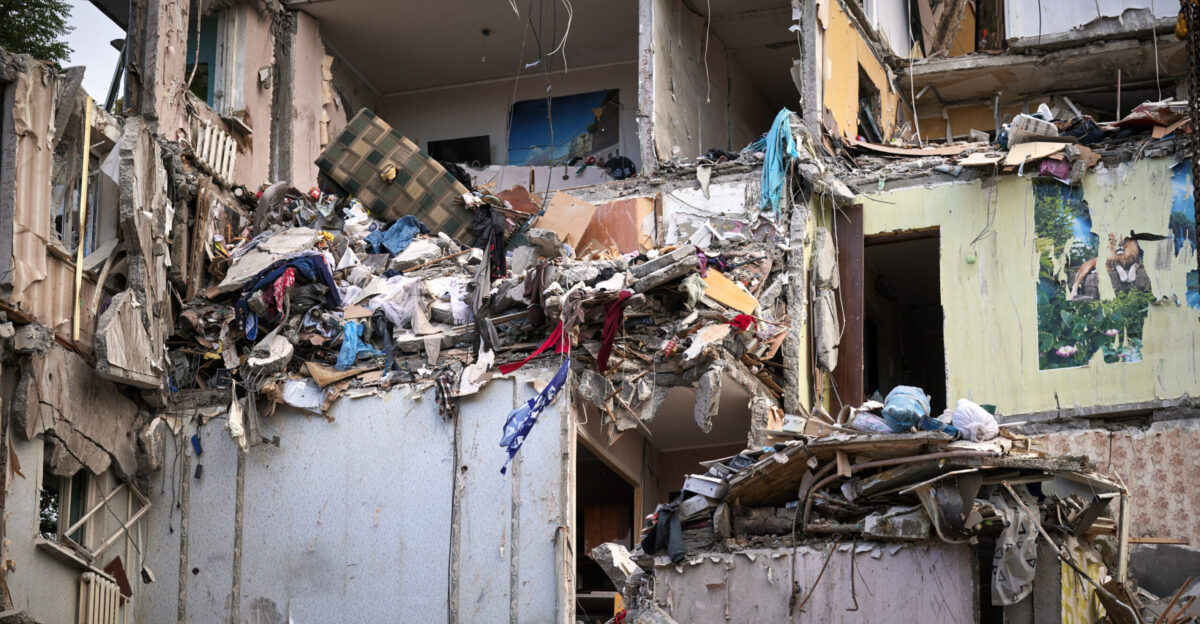
Observers warn the Kremlin could respond with intensified missile and drone strikes. Russia launched over 300 drones at Ukraine days before Orenburg, according to the Institute for the Study of War.
“We’re in an escalation loop,” said one European defense official. “Each strike justifies the next.” The war over infrastructure has become its own front.
Kyiv and Moscow’s Dueling Narratives Intensify
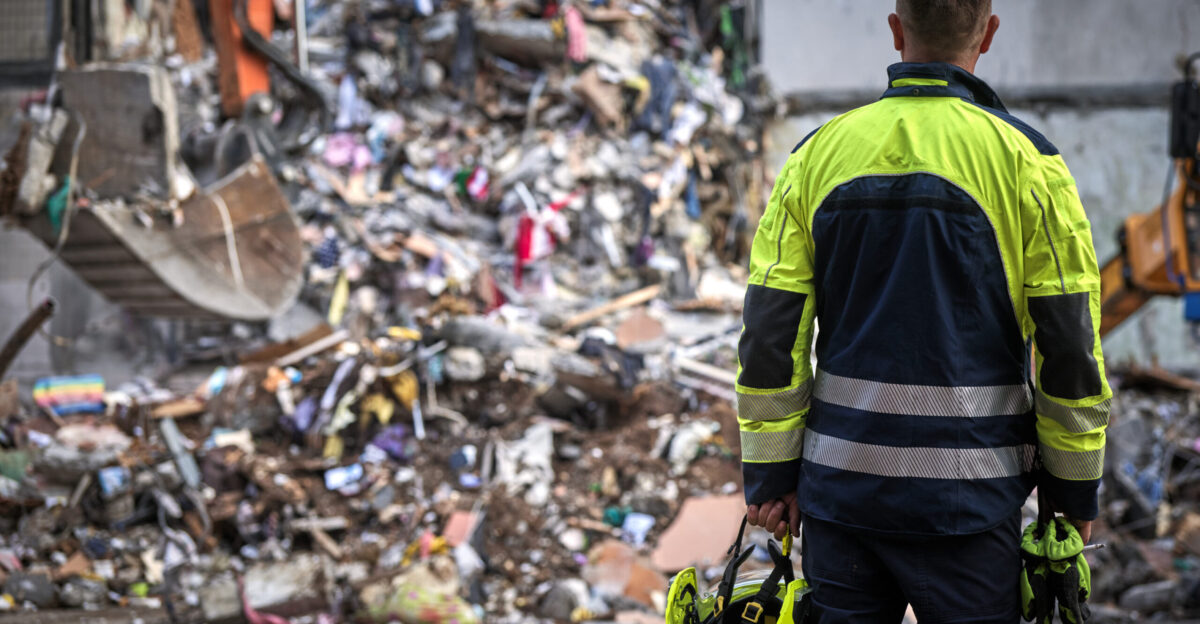
Kyiv insists these are legitimate military targets; Moscow calls them “terrorist acts.” The truth depends on perspective and politics. Each side shapes its own narrative as infrastructure becomes both a weapon and a battlefield.
What began as trench warfare has turned into an invisible duel fought through power grids and pipelines.
Orenburg in Ruins: A Symbol of Modern Warfare’s Reach
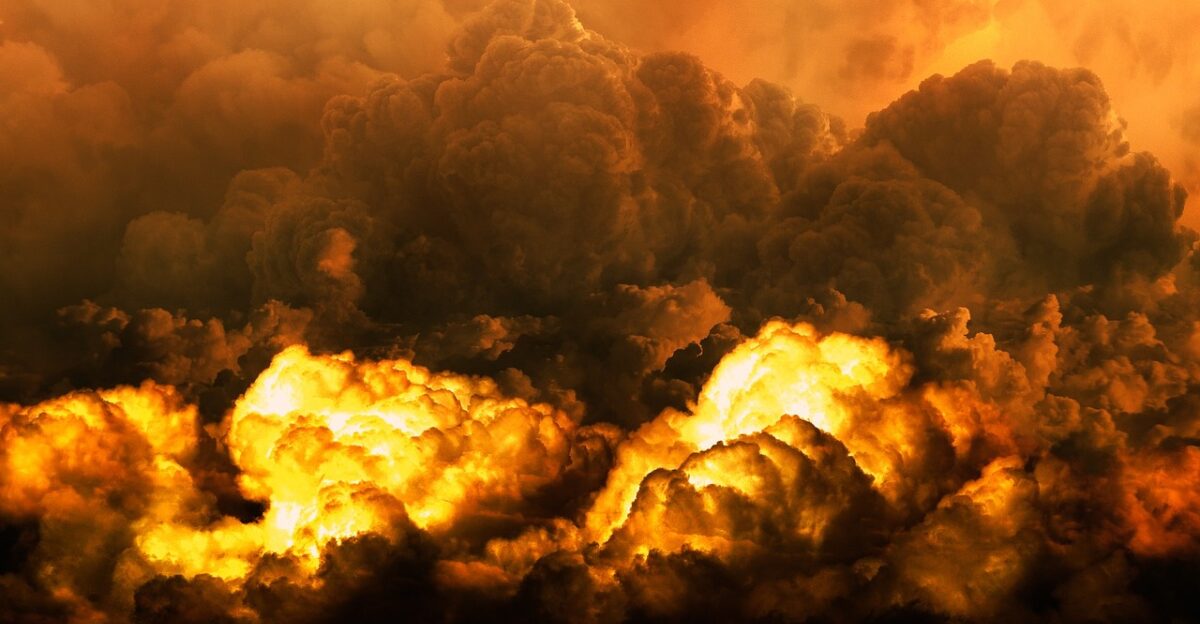
By Monday, the fire was out, but the silence at Orenburg told its own story. Ukraine’s Defense Ministry declined operational details, saying only that “long-distance forces continue to hit legitimate targets.”
Once a symbol of energy dominance, Orenburg now stands crippled—a monument to how a few small drones can shift the balance of a global war.